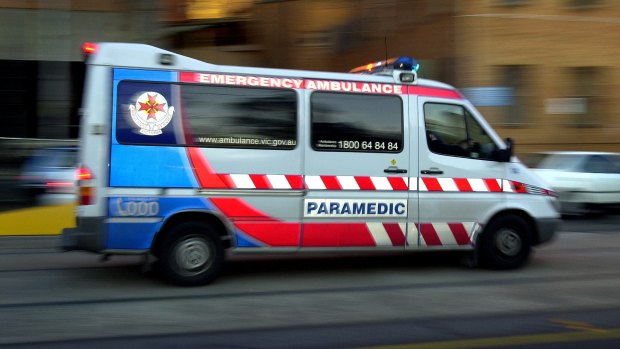By Craig Butt
The 48 hours straddling the new year are usually the busiest time of the year for ambulance services, as heat and drug-fuelled celebrations combine to put extra strain on paramedics.
On New Year's Day this year Ambulance Victoria paramedics were sent out to almost 1800 cases, almost 20 per cent more than the daily average of about 1500 calls.

About 8500 people went to hospitals during the thunderstorm asthma crisis. Credit: Dominic O'Brien
Ambulance Victoria Senior Paramedic Team Manager Danielle North said it was the busiest time of the year because of alcohol and drug use, big crowds congregating in the city, illegal fireworks and often sweltering conditions.
"The biggest issues facing this new year's period would be heat and drug and alcohol related. It's hard to predict, and we're trying to communicate the risk of heat and for people to take those risks quite seriously," she said.
"But on New Year's Eve people do drink to excess on occasion and use illicit drugs and that can cause problems in itself."
Ambulance Victoria data shows that paramedics received more than 1500 calls for assistance on New Year's Eve last year, suggesting that a lot of the emergencies happen after midnight.
But even though there were 1796 callouts on New Year's Day, only 1195 led to people being taken to hospital, a much lower proportion than usual.
Acting Chief Operations Officer of Ambulance Victoria Mick Stephenson said many of the calls involved minor injuries or alcohol use and did not require transport to hospital.
He said the period leading up to Christmas and into the first few days of the new year often saw an increase in demand for ambulances.
"This increase can be due to people being out and about enjoying themselves, especially if the weather is warm, increased traffic on the roads, children trying out their new Christmas presents like bikes and, sadly, family violence," he said.
There were 1582 callouts each day on average during the holiday period between Christmas Day last year and January 4 of this year, compared with the average of 1504 for the rest of January.
The only time this year that paramedics faced more calls than over new year was during the heatwave earlier this month, in which temperatures statewide exceeded 40 degrees.
Mr Stephenson said that while paramedics were there to help, people should only call for an ambulance if there was a medical emergency.
"If you are suffering chest pain or any other serious medical condition, then certainly call Triple Zero," he said. "But if it is something less urgent then just think about whether a doctor, Nurse On Call, a relative or another service is more appropriate."
Earlier this month, Health Minister Jill Hennessy announced that ambulances would focus on the most life-threatening cases, while less critical patients will be diverted to doctors.
Emergency departments also tend to experience an increase in demand over Christmas and new year, with research finding New South Wales hospitals were 9% busier than normal during the holiday season.
The study, published in the Medical Journal of Australia, found this was partly due to the fact fewer doctor surgeries were open and people were going straight to emergency departments for treatment.
The spike in family violence over the holiday period also puts strain on women's support services as families come together or access arrangements mean children have to spend time with perpetrators.
Last December and January Berry Street's family violence support services received 1550 referrals from police, more than double their normal monthly average.
With Rebecca Rubenstein